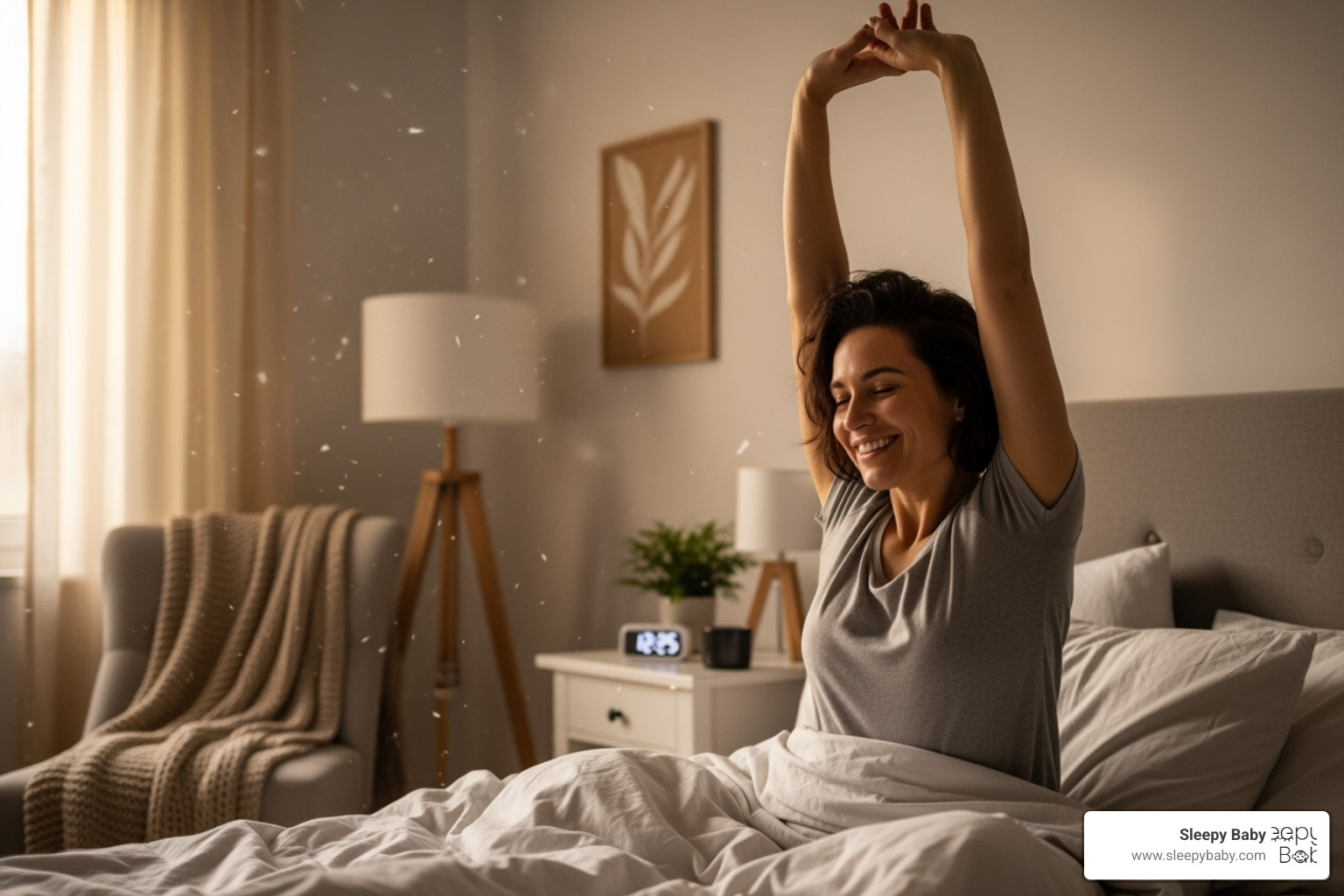Mastering the Art of Strategic Napping
Sleep aid for naps can transform your midday slump into a powerful productivity boost. Whether you're battling sleep deprivation as a new parent or simply looking to improve your daily performance, the right combination of timing, environment, and gentle aids can make all the difference between waking up refreshed or more tired than before.
Quick Answer: Best Sleep Aids for Naps
- Natural aids: White noise machines (safe, low-decibel), rhythmic patting devices
- Timing aids: Caffeine 20 minutes before napping ("nap-a-latte" technique)
- Environmental aids: Eye masks, earplugs, cool temperature (60-67°F)
- Duration: 10-30 minutes for alertness, 90 minutes for creativity
- Optimal timing: 1-3 PM during natural energy dip
Nearly 70% of people take daytime naps, yet most don't know how to maximize their benefits. Research from NASA shows that a perfectly timed 26-minute nap can boost alertness by 54% and performance by 34%. But here's what most people miss: the wrong sleep aid or poor timing can leave you feeling worse than before you closed your eyes.
The science is clear—strategic napping offers remarkable benefits including improved memory, better mood, improved creativity, and reduced stress. However, napping longer than 30 minutes can trigger sleep inertia, leaving you groggy and disoriented. The key lies in understanding which sleep aids work best for your specific napping goals.
After struggling with my newborn's sleep challenges, I found that the right sleep aid for naps—for babies and exhausted parents alike—can be life-changing. My experience developing gentle, rhythmic soothing devices taught me that effective nap aids don't just help you fall asleep; they help you wake up refreshed and ready to tackle the day.
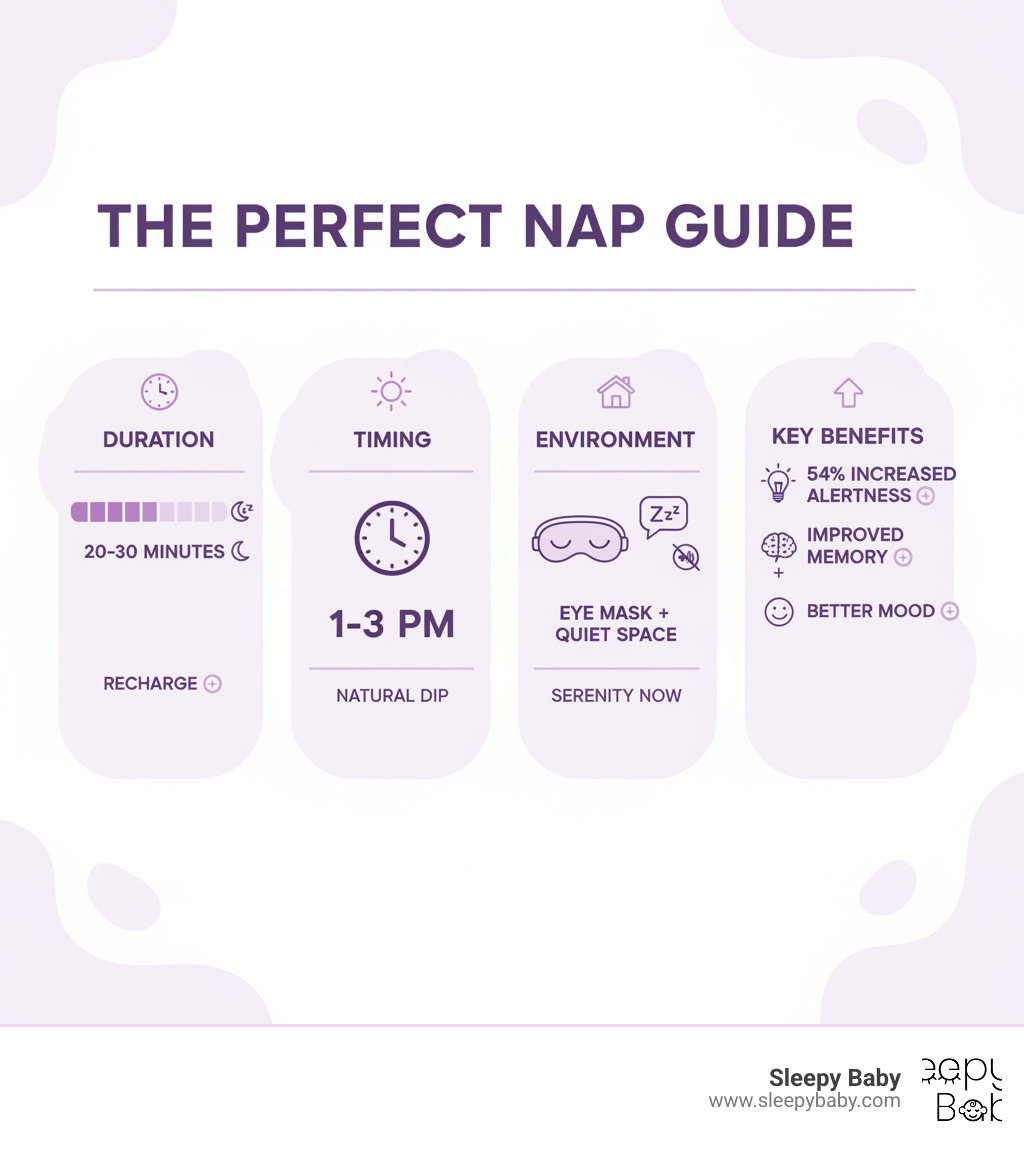
The Science of the Siesta: Why Napping is Your Secret Weapon
That 2 PM energy crash isn't just in your head—it's your body's natural circadian rhythm at work. A strategic nap can be your secret weapon against this afternoon fatigue. Think of napping as a biological sleep aid for naps. When done correctly, it's like hitting the refresh button on your brain, offering benefits that go far beyond simply catching up on lost sleep.
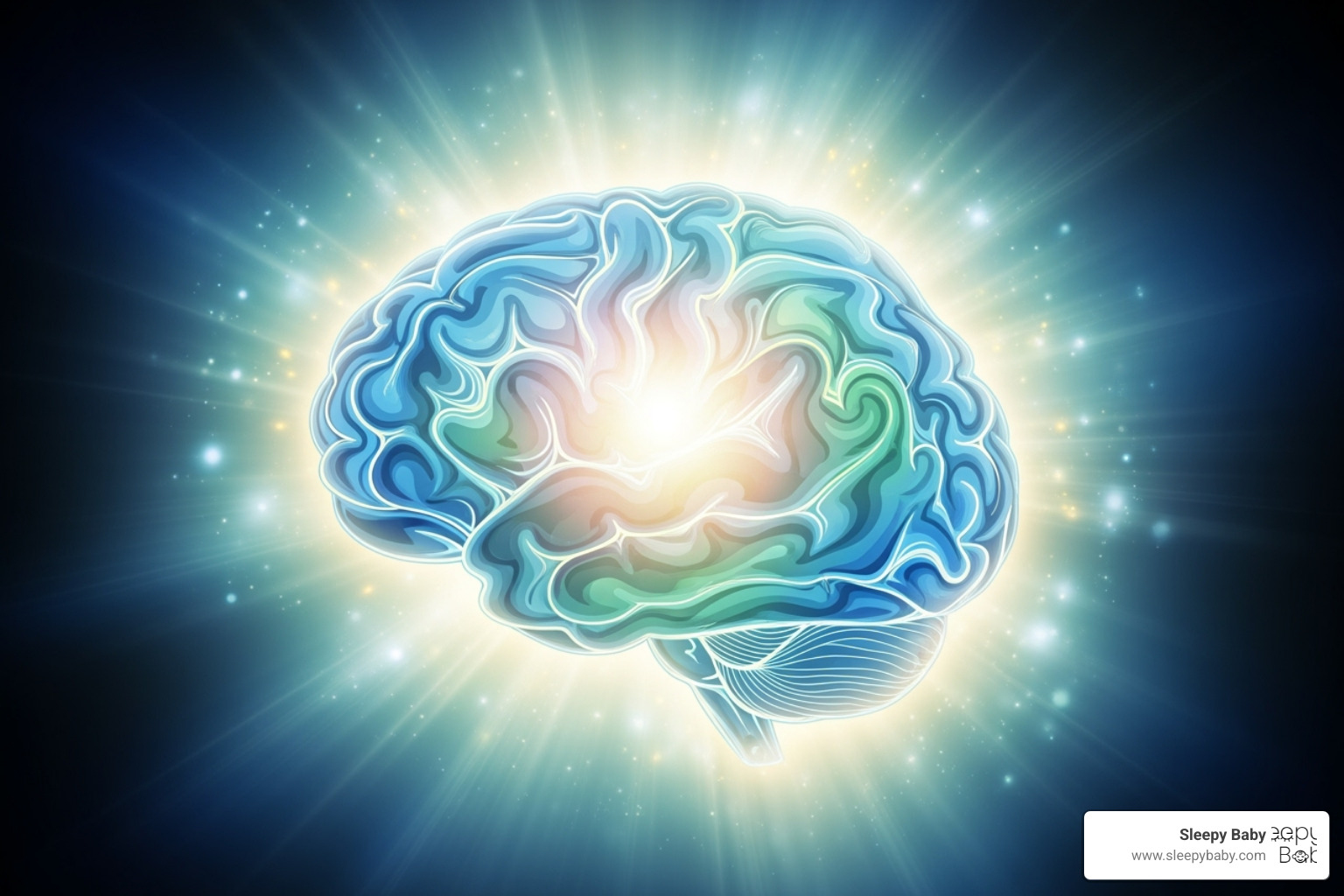
What are the benefits of napping for healthy adults?
When you take a power nap, your body kicks into repair mode, delivering benefits that can transform your day.
Improved cognitive function tops the list. Your brain uses this downtime to consolidate memories, process information, and clear out mental clutter.
Improved creativity flows naturally from this mental reset. Many artists and inventors have credited their afternoon siestas for breakthrough ideas as their brains make new connections during sleep.
The emotional regulation benefits are equally impressive. A well-timed nap helps you manage stress more effectively and maintain a balanced mood, leaving you with renewed patience and perspective.
Physical restoration occurs as your muscles relax and blood pressure drops. Research shows that short, regular naps may even lower the risk of cardiovascular issues.
Finally, the performance boost is significant. NASA's research on pilots revealed that a 26-minute nap increased alertness by 54% and performance by 34%. Your reaction time improves, focus sharpens, and memory consolidation gets a major upgrade.
What are the potential drawbacks or negative effects of napping?
While powerful, napping has some important caveats that can make or break your experience.
Sleep inertia is the biggest culprit behind bad naps. This groggy, disoriented feeling occurs when you wake from a nap that's too long, as you're pulled from a deep sleep stage. It can leave you foggy for up to 35 minutes.
Interference with your circadian rhythm is another concern. Poorly timed or overly long naps can disrupt your body's 24-hour clock. Late afternoon naps are notorious for causing nighttime sleep problems, making it harder to fall asleep at your regular bedtime.
There's also emerging research linking long naps with health risks. Studies suggest that regularly napping for more than 60 minutes might be associated with increased risks of cardiovascular disease, diabetes, and high blood pressure. However, these long naps are often a symptom of poor nighttime sleep quality or underlying health issues, not the cause of the problems.
The key takeaway? Short naps are generally safe and beneficial, while longer ones can be problematic. Finding the sweet spot is essential.
The Perfect Nap Formula: Timing, Duration, and Environment
To harness the power of the nap without its potential traps, you need the perfect formula: a strategic blend of timing, duration, and environment. Napping is a precision tool that requires a specific strategy. Get it right, and you'll wake up recharged. Get it wrong, and you'll feel worse than when you started.
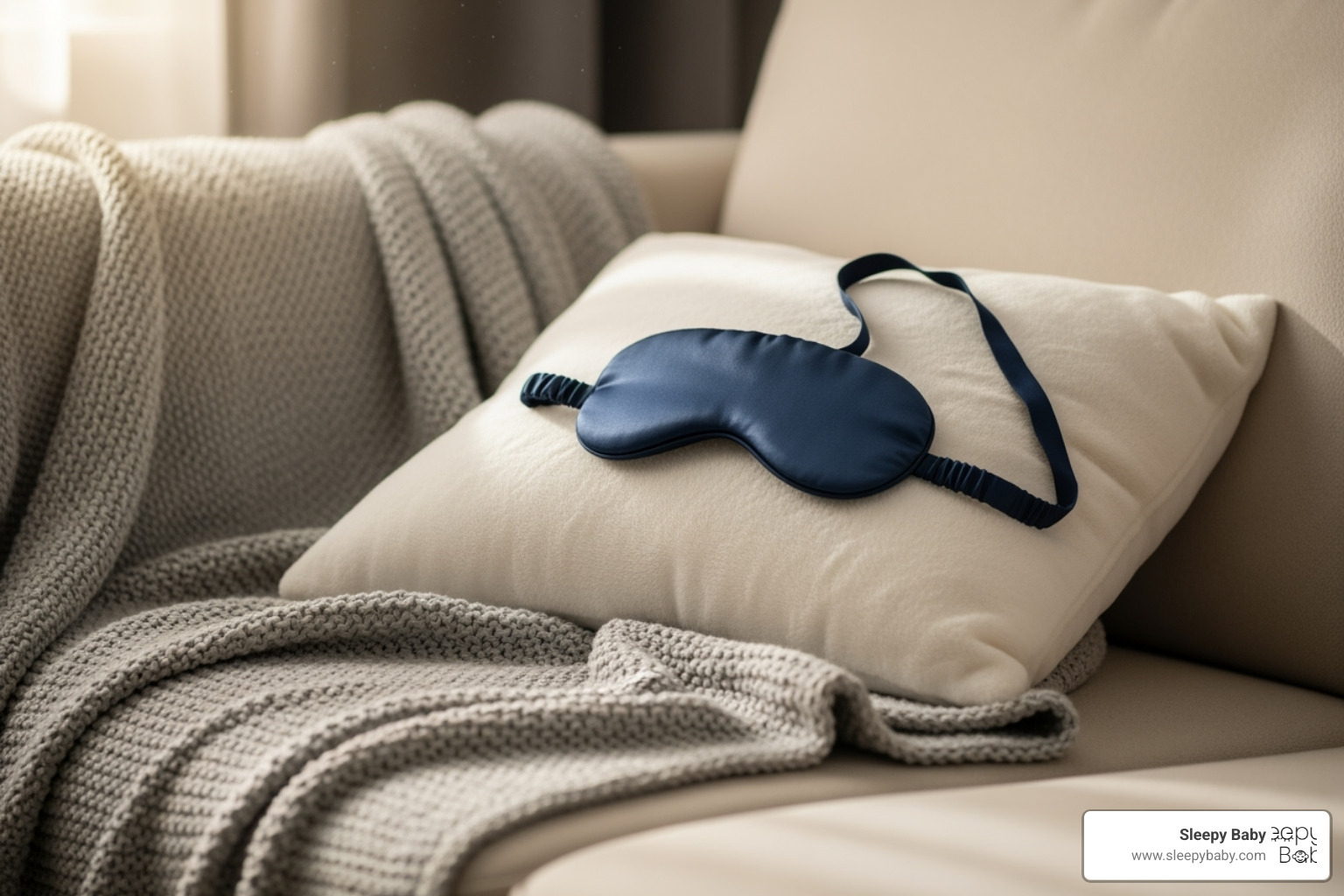
How long should a nap be? Short vs. Long Naps
The length of your nap is the most critical factor. Our brains cycle through different sleep stages, and waking up during the wrong one feels jarring and disorienting.
| Nap Type | Duration | Key Benefits | Grogginess Level | Ideal Situations |
|---|---|---|---|---|
| Power Nap | 10-20 minutes | Alertness, performance, reduced fatigue | Low to None | Midday slump, quick energy boost, avoiding sleep inertia |
| NASA Nap | 26 minutes | Peak alertness (54%), performance (34%) | Low | High-stakes tasks, needing maximum focus |
| Brief Nap | 5-15 minutes | Immediate cognitive benefits (1-3 hours) | Very Low | Quick mental refresh, no time for deep sleep |
| Full-Cycle Nap | 90-120 minutes | Creativity, memory consolidation, emotional processing | Moderate | Catching up on sleep, deeper restoration, weekend naps |
For boosting alertness, power naps of 10 to 30 minutes are ideal. This keeps you in lighter sleep stages, so you wake up refreshed. Famous NASA research on optimal nap length found that 26 minutes was the magic number for peak pilot performance.
Full sleep cycle naps of 90 to 120 minutes allow your brain to complete an entire sleep cycle, including REM sleep, which is crucial for creativity and memory. You might feel a bit groggy at first, but the cognitive benefits can last for hours. Match your nap length to your goals: a quick boost calls for a short nap, while deeper restoration may require a full cycle.
When is the optimal time of day to take a nap?
Our bodies experience a natural dip in alertness between 1 PM and 3 PM, making this the golden window for napping. Napping during this dip works with your circadian rhythm, not against it, so you fall asleep easier and wake up more refreshed.
Avoiding late afternoon naps is just as important. Napping after 3 PM can interfere with nighttime sleep, leaving you tossing and turning at bedtime.
What are the best practices for taking an effective nap?
Creating the right nap environment signals to your body that it's time to rest.
- Temperature control: A cool room between 60-67°F helps your body temperature drop, which naturally happens as you fall asleep.
- Creating darkness: For short power naps, some natural light can prevent you from falling too deeply asleep. For longer naps, eye masks or blackout conditions are better.
- Sound management: Earplugs are effective, but modern white noise machines designed for safe, low-decibel use can be even better. They mask disruptive sounds with consistent, soothing background noise. Some advanced options even include rhythmic patting features that mimic a comforting touch, which is especially helpful for relaxation.
- Eliminating distractions: Let others know you're resting, close your laptop, and turn off notifications.
- Setting an alarm: This is non-negotiable to prevent oversleeping and ensure you stick to your intended nap duration.
Unconventional Hacks and Finding the Right Sleep Aid for Naps
Sometimes, the perfect environment and timing aren't enough. That's where clever sleep aid for naps techniques come in handy, and some might surprise you.
The "Nap-a-Latte": Can caffeine be a beneficial sleep aid for naps?
Coffee before a nap sounds counterintuitive, but the "caffeine nap" or "nap-a-latte" is a brilliant hack backed by sleep experts like Dr. Michael J. Breus. Throughout the day, our brains accumulate a sleepy molecule called adenosine. Caffeine works by blocking adenosine receptors.
The magic is in the timing. Caffeine takes about 20-30 minutes to kick in. If you drink coffee and immediately take a 20-25 minute nap, you wake up just as the caffeine starts working. The nap naturally clears some adenosine, while the caffeine blocks what's left. The result is feeling incredibly refreshed and alert. To try this, drink a strong cup of coffee, set a 20-25 minute timer, and close your eyes. Even just resting helps clear adenosine.
Natural and Environmental Aids to Help You Doze Off
Beyond the caffeine hack, several gentle aids can create a restorative experience without creating dependency.
White noise is one of the most effective environmental sleep aids for naps. It creates a consistent sound blanket that masks sudden noises. While some white noise machines can be unsafe due to high decibel levels, modern safety-rated devices exist that present white noise at safe, low-decibel levels. These work beautifully for creating a peaceful nap environment and promoting better rest.
Rhythmic tapping is also surprisingly effective for adults, just as it soothes babies. The gentle, repetitive motion triggers the body's relaxation response. While devices with this feature were developed for infants, the underlying principle of mimicking soothing touch works across all ages.
When it comes to natural supplements, be thoughtful. Always consult with a doctor before trying any, as they aren't as strictly regulated by the FDA.
- Melatonin is a timing signal for your body's sleep cycle, better for shifting sleep schedules than for quick naps.
- L-Theanine, found in tea, can improve nap quality by promoting relaxation.
- Glycine is an amino acid that may help by slightly lowering body temperature, a natural part of falling asleep.
Napping for New Parents: A Survival Guide
For new parents, sleep deprivation is a bone-deep exhaustion that makes simple decisions feel overwhelming. Strategic napping becomes less about luxury and more about basic survival.
The common advice to "sleep when the baby sleeps" is easier said than done. Between feedings, diaper changes, and a growing mental to-do list, finding time to rest feels impossible. Your little one's unpredictable sleep patterns make it incredibly difficult for parents to relax, even when the opportunity arises.
This is where understanding the right sleep aid for naps—for both your baby and yourself—becomes a game-changer. When your baby can sleep more independently and for longer stretches, it creates precious windows for you to rest.
For babies, innovative solutions like rhythmic patting devices can be incredibly effective. These devices mimic the comforting touch of a caregiver's hand, providing consistent, hands-free soothing that helps infants fall and stay asleep longer. Combined with safe, low-decibel white noise, these tools create a secure sleep environment that promotes better rest patterns. We know many parents struggle with nap time drama, and the right sleep aids can transform these stressful moments into peaceful ones.
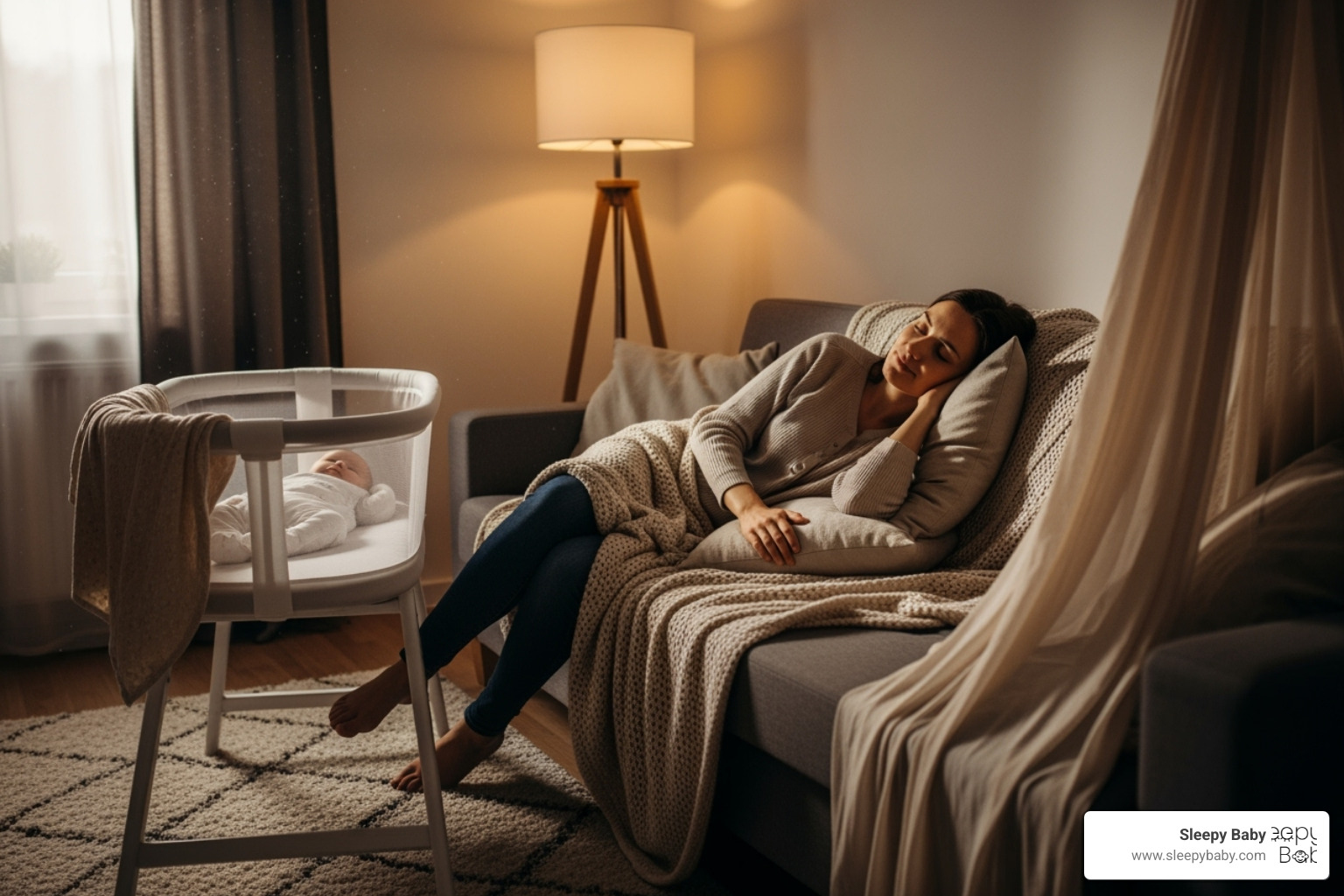
When your baby is safely settled, you can focus on your own restoration. Even a quick 20-minute power nap can work miracles by improving your mood, reducing stress, and sharpening your focus. Taking care of yourself isn't selfish; it's essential. A well-rested parent is better equipped to handle the beautiful chaos of raising a little one.
Frequently Asked Questions about Napping
After helping countless exhausted parents find their way to better sleep, I've noticed the same questions about napping come up again and again. Let's tackle the most common concerns so you can nap with confidence.
Can a sudden increased need for naps indicate an underlying health condition?
A sudden, desperate need for naps can be your body's way of telling you something important. Excessive daytime sleepiness is a red flag.
Sometimes the culprit is poor nighttime sleep quality. You might be in bed for eight hours, but if you're tossing and turning, those hours aren't restorative.
Other times, underlying health conditions are the cause. Sleep apnea, anemia, or thyroid issues can all leave you feeling constantly drained.
If you need frequent naps despite what should be adequate nighttime sleep, it's worth talking with your doctor. They can help identify if your increased need for a sleep aid for naps points to something that needs attention.
What are the potential long-term health risks associated with frequent or long naps?
The relationship between napping and health is complicated. Short, strategic power naps are generally beneficial, but regular naps over 60 minutes might tell a different story.
Research has found correlations between frequent long naps and an increased risk of cardiovascular disease, diabetes, and high blood pressure. However, it's important to note that these long naps are often a symptom rather than the cause. For example, someone taking long daily naps might have their nighttime sleep disrupted by an undiagnosed condition like sleep apnea. The napping as a symptom vs. a cause distinction is crucial.
The good news? Short naps are generally safe and fall into the healthy category.
How can I wake up from a nap without feeling groggy?
Waking up groggy from a nap is a common complaint. The secret to avoiding it lies in understanding sleep cycles and having a solid wake-up plan.
- Keep naps short (under 30 minutes). This is the golden rule. Staying in this sweet spot helps you avoid the deeper stages of sleep that are harder to wake from.
- If you need a longer nap, aim to wake at the end of a 90-minute cycle. This allows you to complete a full sleep cycle and wake at a natural transition point.
- Your post-nap routine is also key. As soon as you wake up, expose yourself to bright light to signal to your brain that it's time to be alert. Splashing your face with water or doing some light stretching can also help get your blood flowing and shake off any lingering sleepiness.
Conclusion
Napping isn't just about catching up on lost sleep—it's about mastering a powerful life skill that can transform your daily energy and performance. When done right, strategic napping is one of the most effective tools in your wellness toolkit.
You now understand why a 20-minute power nap can be more refreshing than an hour of poor sleep and how to avoid the grogginess trap that makes many people swear off napping.
The science is clear: timing is everything. The sweet spot between 1-3 PM is when your body is primed for restoration. Duration matters, whether you choose a quick 10-20 minute power nap for alertness or a full 90-minute cycle for creativity.
Your environment is your secret weapon. A cool, dark, and quiet space is a necessity for effective rest. When you add the right sleep aid for naps, like the "nap-a-latte" technique or the gentle rhythm of white noise, you optimize your entire experience.
For sleep-deprived parents especially, mastering these techniques is essential for survival and well-being. When your baby sleeps soundly with the help of gentle, rhythmic soothing devices, you get that precious window to restore your own energy. Taking care of yourself is necessary for being the parent your little one needs.
The journey to better sleep doesn't end with your own rest. Understanding how a sleep aid for naps can work for the whole family creates a ripple effect of better sleep, improved moods, and more energy for everyone.
